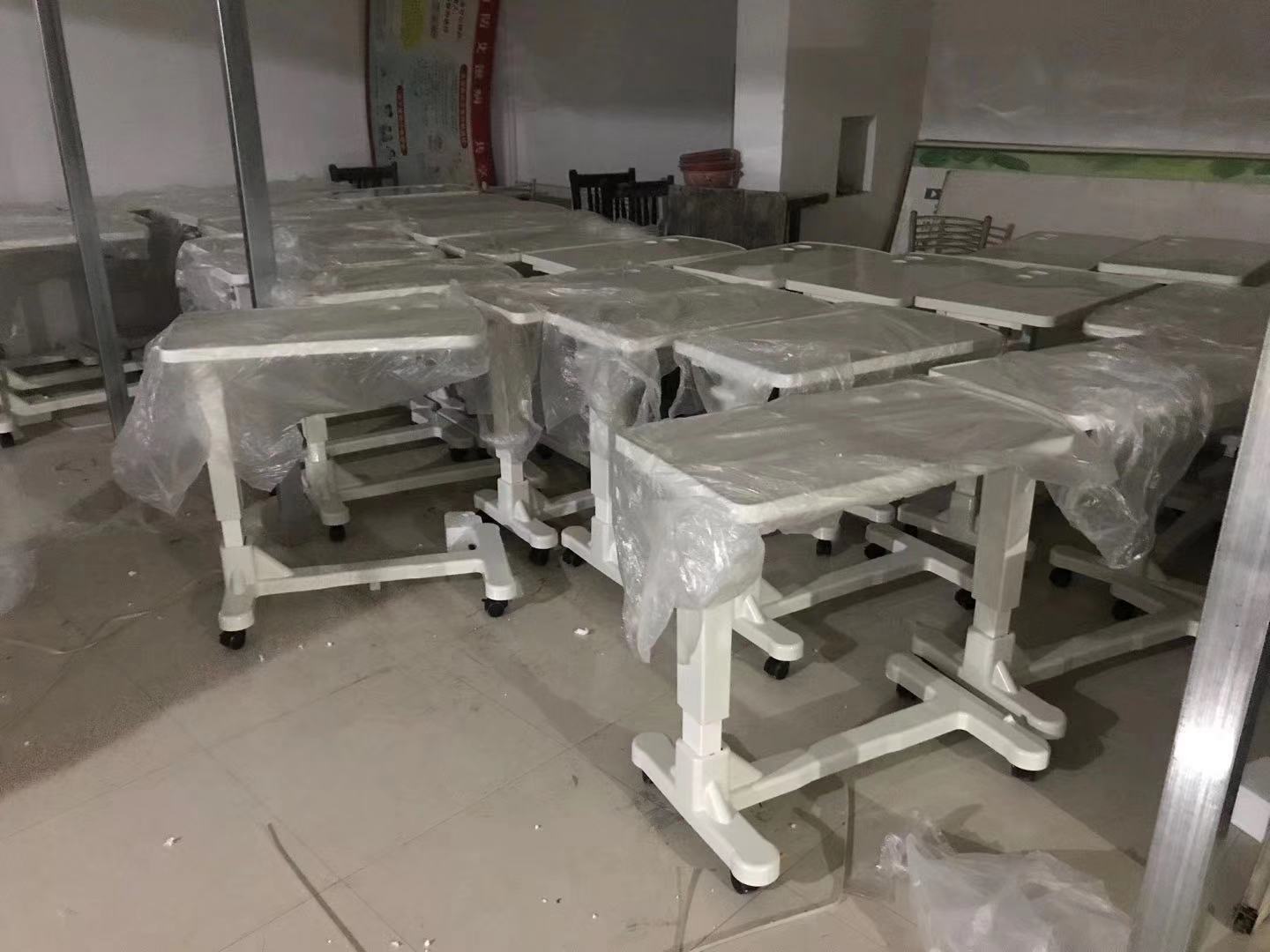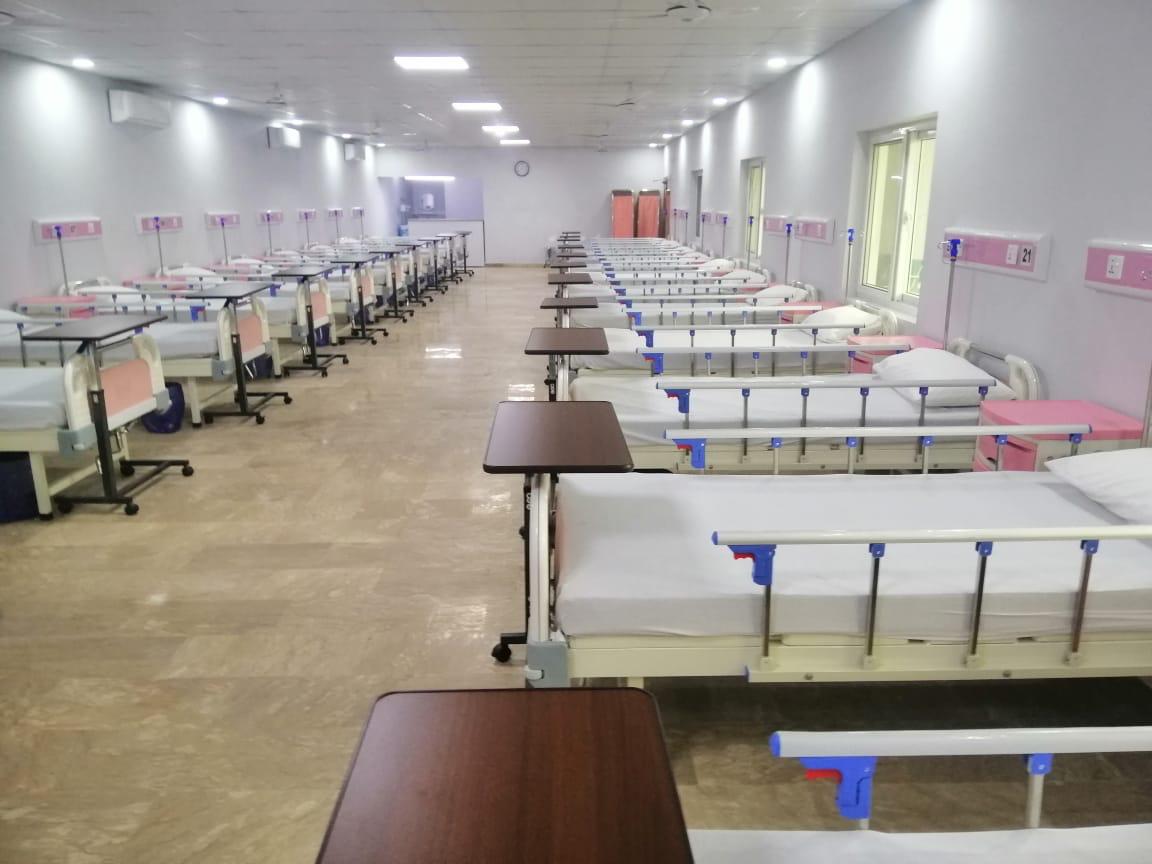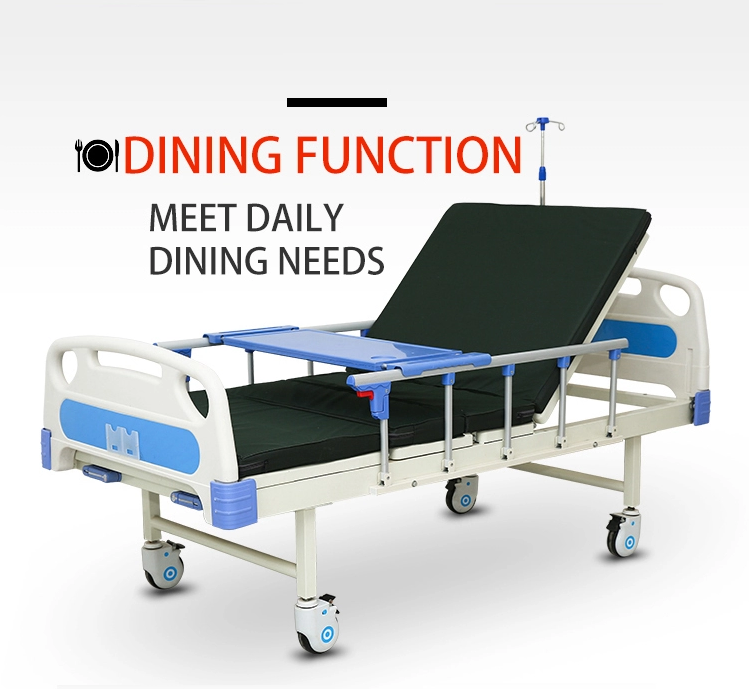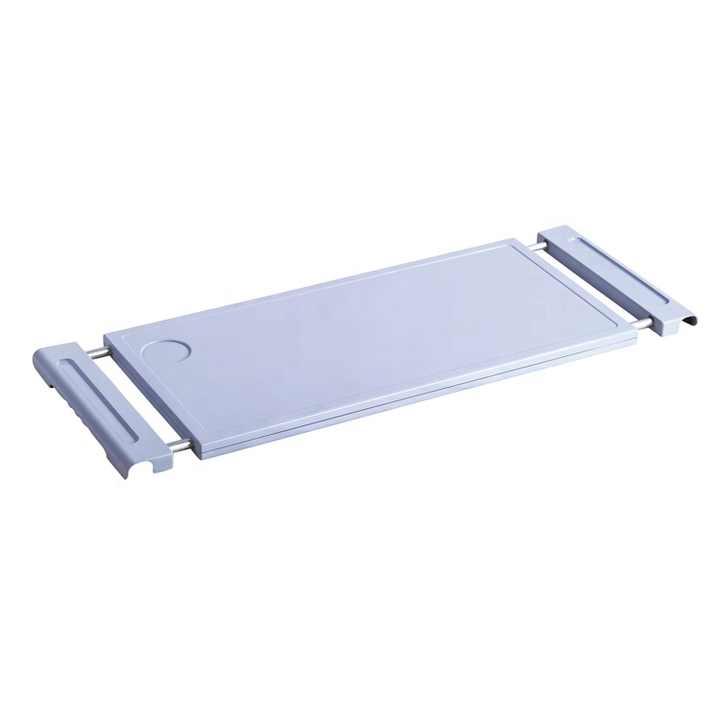Dining tables are essential pieces of furniture in hospitals, providing patients with a stable surface for eating meals, reading, working, and other daily activities. These versatile tables are designed to accommodate patients whether they are seated in a chair or lying in a hospital bed. In this blog post, we’ll explore three types of dining tables commonly used in hospitals and discuss how manufacturers like Anyang Top Medical Devices Co., Ltd. offer customizable options to meet specific hospital needs and budget requirements.
- Hospital Overbed Table with Wheels
Design and Functionality: The overbed table is designed with a cantilever shape that allows it to extend over a hospital bed. Its key features include:
- Hydraulic height adjustment mechanism for customized comfort
- Height range typically from 645 mm to 900 mm
- U-shaped base for enhanced stability
- 4 castor wheels for easy mobility
- Adjustable damper to set and maintain the proper height
- Simple operation: push down to lower, lift handle to raise
This type of table offers maximum flexibility for patients confined to their beds. The hydraulic system allows for smooth height adjustments, ensuring patients can comfortably eat, read, or work from their bed.
Material Options: Manufacturers like Anyang Top Medical Devices Co., Ltd. often provide two main tabletop material options:
- White ABS plastic: Durable and easy to clean
- Wooden-coffee surface: Offers a warmer, more home-like aesthetic
The choice between these options often comes down to budget considerations and the overall design aesthetic of the hospital ward.
- Adjustable Table with Manual Crank for Seated Patients
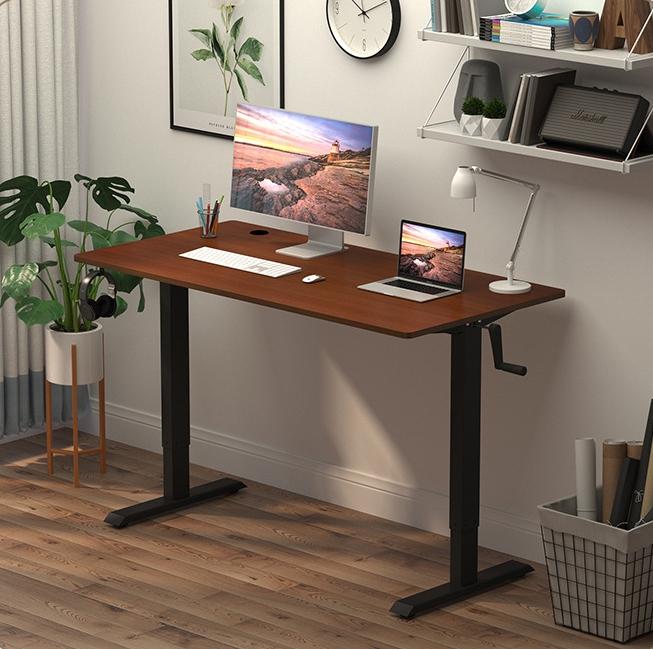
Design and Functionality: This table type is specifically designed for patients who can sit in a chair. Key features include:
- Steel legs for durability
- Manual crank mechanism on the right side, discreetly placed under the table surface
- Height adjustment to accommodate different chair heights and patient preferences
- Optional 4 movable castors with brakes for added mobility and stability
The manual crank design allows nurses to easily adjust the table height to suit each patient’s needs. This type of table is particularly useful in common areas or patient rooms where mobility is less of a concern.
Customization: Manufacturers often support custom sizing to fit specific room layouts or patient needs. The option for movable castors adds versatility, allowing the table to be easily repositioned as needed.
- Telescopic Dining Table Mounted on Aluminum Side Rails
Design and Functionality: This cost-effective option is designed to work with hospital beds that have aluminum side rails. Features include:
- Telescopic mounting channel for easy attachment and removal
- Compact design that can be tucked away when not in use
- Significantly lower price point compared to hydraulic overbed tables
This type of table is an excellent choice for hospitals looking to provide basic dining surfaces for all patients while managing budget constraints. The telescopic design allows for easy storage and quick deployment when needed.
Choosing the Right Dining Table for Your Hospital
When selecting dining tables for a hospital project or tender, consider the following factors:
- Specific Requirements: Review the tender specifications carefully to understand what type of dining table is required.
- Budget Constraints: Determine the allocated budget for dining tables and choose options that provide the best value within those constraints.
- Functionality Needs: Consider the primary use cases for the tables in your hospital setting. Will they mainly be used for bedridden patients, or do you need a mix of overbed and seated patient tables?
- Customization Options: Look for manufacturers who offer customization to meet your specific needs. This may include size adjustments, material choices, or additional features like built-in storage.
- Durability and Maintenance: Choose tables made from materials that are easy to clean and maintain in a hospital environment.
Working with Manufacturers
Manufacturers like Anyang Top Medical Devices Co., Ltd. specialize in creating custom solutions for hospital projects. Their teams typically include:
- Mechanism engineers to design and optimize table functionality
- Professional international sales staff to coordinate requirements and provide tailored solutions
These manufacturers can work with you to:
- Develop custom specifications that meet your exact needs
- Provide options within your target price range
- Offer insights on the best table types for different hospital areas
Conclusion
Choosing the right dining tables for a hospital is crucial for patient comfort and care. By understanding the different types available – from hydraulic overbed tables to telescopic side-rail mounted options – hospitals can select the best mix of tables to suit their patients’ needs and budgetary constraints. Working closely with experienced manufacturers ensures that hospitals can find or develop custom solutions that perfectly align with their specific requirements, ultimately contributing to improved patient experiences and more efficient healthcare delivery.

